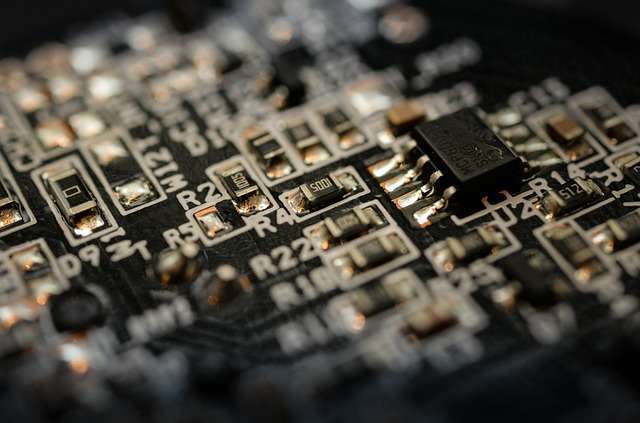In recent years, the need for edge AI has increased, and along with that, edge devices for operating AI are diversifying. As you can see just by searching on the Internet, there is an extremely wide variety of products on the market, but it is not uncommon for people to come up with the most suitable device for what purpose. Is not it?
Therefore, in this article, I would like to introduce the trend of edge devices and their simple advantages, disadvantages, and suitable uses. Single-board computers and microcomputer boards are widely used as edge devices, and each has advantages and disadvantages. Read this article to help you decide which edge device is best for your application.

Contents
- single board computer
- microcomputer board
- in conclusion
1. Single board computer
In this section, we will introduce edge devices that mainly use OSs such as Linux and Ubuntu. It is recommended to use it not only for simple data processing, but also for AI inference, or when there is a need to complete everything to some extent with this one.
Raspberry Pi 4
| merit |
|
|---|---|
| Demerit |
|
| Suitable for |
|
Raspberry Pi zero W
| merit |
|
|---|---|
| Demerit |
|
| Suitable for |
|
Beagle Bone Series
| merit |
|
|---|---|
| Demerit |
|
| Suitable for |
|
The Beagle Bone series is a product developed with Raspberry Pi in mind. In addition to this, products such as “Banana Pi” and “Orange Pi” are sold by various companies as products that respect Raspberry Pi.
However, some products are only sold on overseas EC sites, and wireless communication may not be possible because they have not acquired the Technical Conformity (Technical Standards Conformity Certification) mark, so they are not very practical. .
On the other hand, many of these respected products improve the shortcomings of the Raspberry Pi (mainly processing speed), making it an option in very limited situations.
In any case, in order not to violate the Radio Law, it is necessary to develop products that have acquired the Technical Conformity Mark.
NVIDIA Jetson series
| merit |
|
|---|---|
| Demerit |
|
| Suitable for |
|
Ticker Board
| merit |
|
|---|---|
| Demerit |
|
| Suitable for |
|
Summary of single board computers
If the only condition is system development using applications that run on a Linux-based OS, the Raspberry Pi series should be used for the time being. The Raspberry Pi is especially suited for prototyping purposes.
However, if the performance becomes unsatisfactory during development or if you are aiming for commercialization, it is recommended to try other boards.
In particular, in the development of deep learning models, which are gaining importance in recent years, it is often not efficient to use Raspberry Pi for industrial purposes.
Therefore, it is a good idea to check the operation on Raspberry Pi and then use the latest Jeston series to make it into a product.
2. Microcomputer board
This section introduces OS-less edge devices for lower-level processing. You might be thinking, “Isn’t this a low-level choice?” But when I say level, I mean layers of processing. The microcomputer board, which specializes in low-level processing, can perform specified processing at extremely high speed and read the values of connected sensors. For example, a microcomputer board is sufficient for the purpose of collecting sensor data in a factory.
The microcomputer board is generally used by connecting it to a PC or a single-board computer with the above-mentioned OS, not by itself.
Arduino series
| merit |
|
|---|---|
| Demerit |
|
| Suitable for |
|
mbed series
| merit |
|
|---|---|
| Demerit |
|
| Suitable for |
|
ESP series (microcomputer boards equipped with ESP32)
| merit |
|
|---|---|
| Demerit |
|
| Suitable for |
|
M5Stack series
| merit |
|
|---|---|
| Demerit |
|
| Suitable for |
|
M5 Stick V
| merit |
|
|---|---|
| Demerit |
|
| Suitable for |
|
Summary of microcomputer board
Until a few years ago, when it came to microcomputer boards, Arduino and mbed were the only two choices.
However, microcomputer boards equipped with a processor called ESP32 have begun to be sold, and for beginners, the M5Stack and M5Stick series, which are all-in-one sensors and microcomputer boards, have been released. Even though it’s for beginners, it’s a product that has a lot of fans because of its ease of use and the many things it can do. In particular, M5Stick V and its derivatives are becoming standard microcomputer boards for image processing on edge devices.
3. Conclusion
Did you find an edge device that might suit your needs?
Among the products introduced in this article, we recommend Raspberry Pi, Jetson, M5 Stick V, and their derivatives for building edge AI.
If the edge device only collects various sensor data and AI inference is performed on a separate PC, “Arduino”, “mbed” and their derivatives are suitable.
However, the processing speed, power consumption, heat generation, etc. are often unknown until you actually operate it, so please actually purchase the products introduced in this article and try various things.
